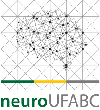Banca de DEFESA: CÂNDIDA DA SILVA FERREIRA BARRETO
Uma banca de DEFESA de DOUTORADO foi cadastrada pelo programa.DISCENTE : CÂNDIDA DA SILVA FERREIRA BARRETO
DATA : 10/02/2021
HORA: 09:00
LOCAL: Remoto devido ao isolamento social
TÍTULO:
DEVELOPING METHODS TO ANALYZE FNIRS SIGNALS FROM NATURALISTIC EXPERIMENTS
PÁGINAS: 115
GRANDE ÁREA: Outra
ÁREA: Multidisciplinar
RESUMO:
The brain is one of the most intriguing and complex organs of the human body. Understanding its function and structure has been a great challenge in science. The Functional Near-Infrared Spectroscopy (fNIRS) is a neuroimaging technique that has improved our knowledge of the neural mechanisms underlying the human brain, especially during everyday tasks. This thesis aims to provide novel methodologies to analyze fNIRS data from naturalistic experiments. Two methods are proposed. One combines the multivariate Distance Matrix Regression (MDMR) and the Intersubject correlation (ISC) to investigate the brain - behavioral association. We applied the proposed framework to data from a naturalistic experiment about valences of emotions conveyed by music. The method identified a significant association of fNIRS data and behavioral response related to the musical excerpt that conveyed the participants to the most negative valence. We also applied the proposed methodology to a traditional block design experiment to evaluate the prefrontal cortex (PFC) during a random number generation task. We compared the results with the outcomes from the analysis with the traditional GLM approach. Both results converged and demonstrated the feasibility and applicability of the proposed methodology. The second method consists of applying the Support Vector Regression (SVR) to predict the fNIRS time-series collected from one brain using the other brain signals as predictors. We applied it to data from a hyperscanning of five teacher-children dyads during an interaction task. We compared the results with predictions using the ordinary least square (OLS). The SVR predicted all dyads’ student signals, while the OLS predicted only two dyads. SVR predictions were statistically significantly correlated with the actual test data at least one channel-pair for all dyads. Overall, 27/85 channel-pairs across the five dyads (17 channels x 5 dyads = 85 channel-pairs) were significant with the SVR approach. On the other hand, the conventional OLS resulted in only 3 out of 85 valid predictions. These results demonstrated that the SVR could be used to perform channel-wise predictions across individuals. Thus, this thesis contributes to the fNIRS data analysis field and open new opportunities to perform experiments with more flexible protocols.
MEMBROS DA BANCA:
Presidente - Interno ao Programa - 1672975 - JOAO RICARDO SATO
Membro Titular - Examinador(a) Interno ao Programa - 1714632 - PETER MAURICE ERNA CLAESSENS
Membro Titular - Examinador(a) Interno ao Programa - 1955999 - ANDRE MASCIOLI CRAVO
Membro Titular - Examinador(a) Externo ao Programa - 1946319 - DIOGO COUTINHO SORIANO
Membro Titular - Examinador(a) Externo à Instituição - GABRIELA CASTELLANO - UNICAMP
Membro Suplente - Examinador(a) Interno ao Programa - 2139904 - CLAUDINEI EDUARDO BIAZOLI JUNIOR
Membro Suplente - Examinador(a) Interno ao Programa - 2353089 - KATERINA LUKASOVA
Membro Suplente - Examinador(a) Externo à Instituição - JOANA BISOL BALARDIN - IIEPAE
Membro Suplente - Examinador(a) Externo à Instituição - ELISA HARUMI KOZASA - InCe




